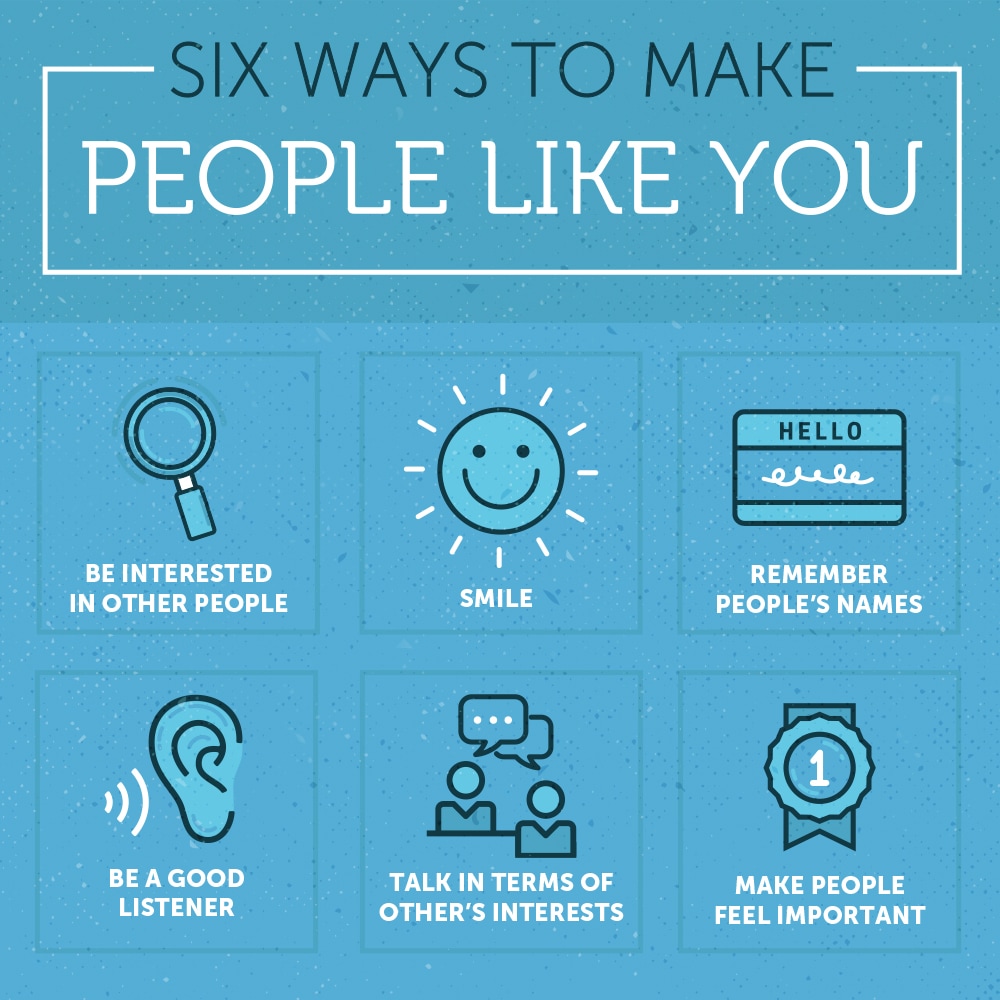How To Gain Trust As A Public Speaker
To gain trust and build a connection with your audience, aim to convey warmth first, instead of leading with a demonstration of power. In the study, Universal dimensions of social cognition: warmth and competence, researchers Amy Cuddy, Susan Fiske, and Peter Glick concluded that warmth is the primary characteristic that all people across all cultures consider when forming an opinion of a person.

There are many ways to display warmth and earn trust during your presentation. Your best bet is to choose the method that feels natural to you.
Here are a few simple ways to connect with your audience.
Be likable.
Likability is an element of warmth that is easy for most presenters to leverage during presentations. Listed as one of the six scientifically proven principles of persuasion, likeability is linked to your ability to establish similarities between you and your audience.
To form a connection with the audience based on your shared interests or views, research your audience before your presentation to identify their passions, concerns, and opinions. Build the intro to your presentation around commonalities between you and your audience. For example, if you share concerns, address your shared worries in your introduction.
When building the connection to your audience, create vocal warmth by using a tone that suggests that you’re leveling with people – that you’re sharing the straight scoop, with no pretense or emotional adornment.
If you are unable to get credible insight into your audience before your presentation, develop a connection with the audience during your presentation intro by tapping into interests that are common to the culture of your audience.
For example, when presenting in the United States, it is likely safe to assume that most people in your audience enjoy – at least occasionally – streaming shows or movies, shopping, reading, and playing with their pets. You can easily connect with your audience by talking about these types of shared interests during the first few moments of your presentation. To do so, simply create a few slides about yourself for the introduction of your presentation. During this intro, take the opportunity to tell at least one relevant and appropriate story that will inspire you to smile, if possible.
Think happy thoughts.
Flashing a genuine smile while sharing a personal story will demonstrate the inside-out warmth that is especially powerful because it is difficult to fake. However if you can’t include a personal, smile-inducing story in your introduction, think happy thoughts during momentary pauses in your talk, or immediately before you walk on stage.

Simply thinking about the things that make you feel the most relaxed and happy – your family, special places or memories, things you’re looking forward to, positive interactions you’ve had with people,news stories about normal people doing heroic things, spending time with your dog or cat – all of those things should help configure your brain in ways that will allow you to go into an interaction feeling warm, says Amy Cuddy.
Chit-Chat.
Use any networking opportunities before your presentation to get a jumpstart on developing a genuine connection with your audience. Credible scientific research confirms the positive impact of chit-chat on connections between people.
When chatting with audience members, develop a sincere interest in what they have to say, and if possible, be generous with your compliments. As you can see in the video below, Dr. Robert Cialdini, Professor Emeritus and author of several respected books such as Influence: Science and Practice, teaches that your likability can be improved if you are complimentary of others.
In addition, during the small talk, keep in mind the six ways to make people like you, as defined by Dale Carnegie. Make the people with whom you chat feel important; encourage them to talk about their interests, be a good listener, and use their name during the conversation.

Six Ways to Make People Like You
1. Become genuinely interested in other people.
2. Smile.
3. Remember that a person’s name is, to that person, the sweetest and most important sound in any language.
4. Be a good listener. Encourage others to talk about themselves.
5. Talk in terms of the other person’s interest.
6. Make the other person feel important – and do it sincerely.
Conclusion:
If you’ve been starting your presentations by communicating your credibility and competence, you might want to rethink your strategy. When you are preparing for your next presentation, remember this quote from Amy Cuddy: A growing body of research suggests that the way to influence – and to lead – is to begin with warmth. Warmth is the conduit of influence: It facilitates trust and the communication and absorption of ideas.
